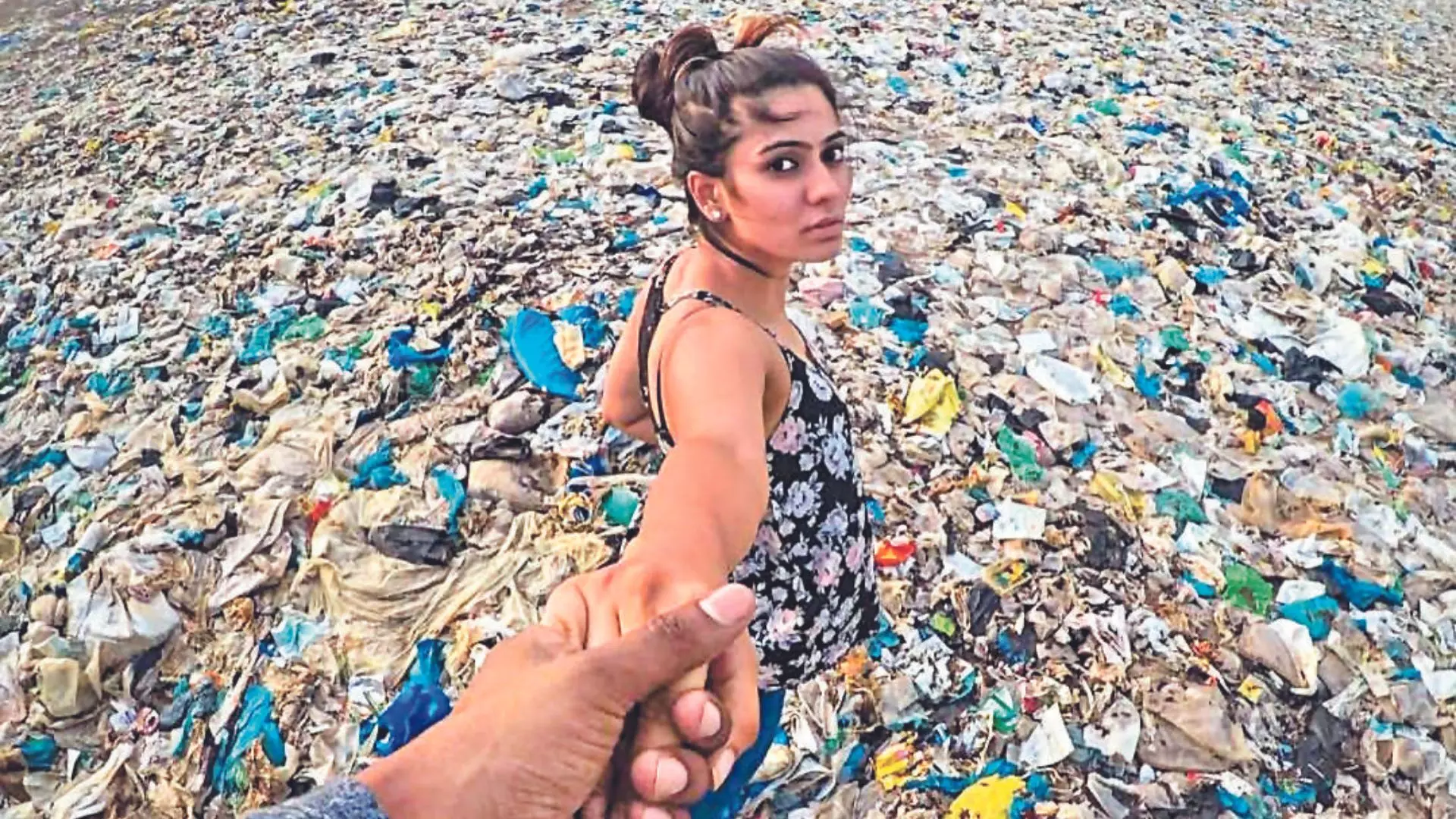Monstrosity Of Micro-Trends
Fleeting trends like Coquette Girl, Heroine Chic, Dior Girl, and Soft Girl transform the concept of girlhood and commodify femininity

The rise of the internet and social media has significantly altered the landscape of fashion and personal identity. In recent years, there has been an explosion of micro-trends, each seemingly more fleeting than the last. Among these are the Coquette Girl, Dior Girl, Girlhood, and Soft Girl —labels that transform the concept of “girlhood” into commodifiable styles. But beneath these trends lies a troubling pattern: the commercialization and exploitation of girlhood, driving overconsumption and shaping identities around ephemeral aesthetics.
Trend(y) Identity
Historically, fashion trends would take years to evolve, influenced by cultural shifts, historical events, and technological advancements. Today, the trend cycle emerges and fades within weeks or months. This rapid turnover is largely fuelled by the Internet, where platforms like Instagram, TikTok, and Pinterest serve as breeding grounds for new aesthetics. The Coquette Girl, with her delicate, frilly dresses and vintage-inspired looks, draws heavily from the aestheticization of femininity and youth. This trend’s problematic origins lie in its ties to the infantilization of women and the romanticization of the “Lolita” archetype, a controversial symbol due to its association with the sexualization of young girls. Similarly, the Heroine Chic trend from the 1990s glorified extreme thinness, perpetuating harmful beauty standards that pressured women to starve themselves to achieve a gaunt, ‘heroin chic’ appearance.
Lily Watkins (33), an independent fashion analyst from London says, “It’s not a new thing. Since the beginning of time, women have been targeted by industries as their prime audience. I can name many female hygiene products that are not needed at all. Women are offered products they don’t even need. The products that are crucial for them are tampered with chemicals and whatnot.”
Exploitation of Girlhood
Each new trend brings with it a wave of consumerism. Brands, especially those in the luxury and cosmetics sectors, capitalise on these shifts, pushing products designed to fit the latest aesthetic. The Dior Girl, for instance, epitomises luxury and sophistication, promoting high-end fashion items and beauty products that often come with hefty price tags. Girlhood as an aesthetic turns the formative years of a woman's life into a marketable commodity, where the pursuit of the “right” look can drive significant spending. This phenomenon isn’t just about selling clothes and makeup. It extends to every facet of lifestyle, including home decor, digital content creation, and even personality traits. The Soft Girl trend, with its pastel colours, blushy makeup, and cutesy demeanour, not only dictates what to wear but how to act and present oneself online. This reduces complex individuals to mere embodiments of transient styles.
A Vicious Cycle
The relentless cycle of trends leads to an equally relentless cycle of consumption. Young women and girls, eager to fit into the latest aesthetic, find themselves constantly buying new items, leading to overconsumption. This not only has financial implications but also significant environmental costs. The fashion industry is one of the largest polluters in the world. The pressure to keep up with trends can take a toll on mental health. The need to conform to ever-changing beauty standards and lifestyles can lead to anxiety, low self-esteem, and a sense of inadequacy.
Real Winners
The cosmetic giants and luxury labels are the real winners in this trend-driven world. They have perfected the art of creating desire and scarcity, pushing limited-edition products that fuel a sense of urgency among consumers. This strategy ensures a constant flow of revenue as people rush to purchase the latest must-have items.
For many companies, the concept of ‘Girl-ism’— the endless reinvention of what it means to be a girl — is a goldmine.
Jia Rathod, an advertising and research trainee, Mumbai, calls the way companies use “girl trends” to make money exploitative. “Instead of genuinely empowering women, these trends often make it seem like girlhood is all about buying stuff,” Jia says. Companies manipulate consumer behaviour by promoting superficial representations of empowerment for profit, overshadowing genuine support for women. This perpetuates stereotypes, reinforces gender roles, and distracts from significant issues like gender equality and education.
Beyond the Trends
The commercialization of girlhood and the pressure to conform to transient aesthetics reflect broader issues of consumerism and identity in the digital age. Ultimately, being a girl — or anyone, for that matter — shouldn’t be about fitting into a prescribed mould or keeping up with ever-changing trends!
Products that are crucial for women are tampered with chemicals and whatnot.”— Lily Watkins, fashion analyst
Instead of genuinely empowering women, these trends often make it seem like girlhood is all about buying stuff.” — Jia Rathod, an advertising and research trainee

